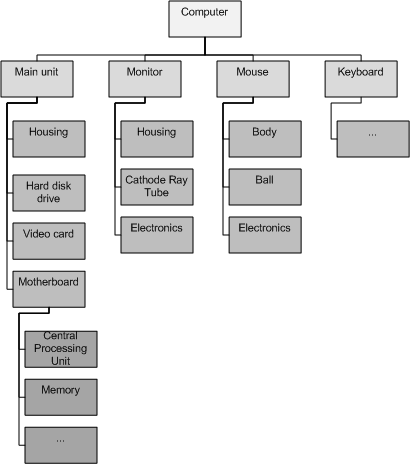Product breakdown structure
In project management under the PRINCE2 methodology, a product breakdown structure (PBS) is a tool for analysing, documenting and communicating the outcomes of a project, and forms part of the product based planning technique.

The PBS provides "an exhaustive, hierarchical tree structure of deliverables that make up the project, arranged in whole-part relationship" (Haughey, 2015).[1]
This diagrammatic representation of project outputs provides a clear and unambiguous statement of what the project is to deliver.
The PBS is identical in format to the work breakdown structure (WBS), but is a separate entity and is used at a different step in the planning process. The PBS precedes the WBS and focuses on cataloguing all the desired outputs (products) needed to achieve the goal of the project. This feeds into creation of the WBS, which identifies the tasks and activities required to deliver those outputs. Supporters of product based planning suggest that this overcomes difficulties that arise from assumptions about what to do and how to do it by focusing instead on the goals and objectives of the project – an oft-quoted analogy is that "PBS defines where you want to go, the WBS tells you how to get there".
Example
PBS of a computer (see image on right):
- Main unit
- Housing
- Motherboard
- CPU
- RAM chips
- ...
- FDD
- HDD
- Video card
- Sound card
- Network card
- LPT port card
- Monitor
- CRT
- Housing
- Electronic components
- Mouse
- Body
- Marble
- Cable
- Keyboard
- Keys
See also
- List of project management topics
- Product (business)
- Product description
- Product management
- Project management
- Work breakdown structure
- Value breakdown structure
References
- Duncan Haughey. (2015) ‘Project Management Tools’, Project Smart. Available from: https://www.projectsmart.co.uk/project-management-tools.php
Further reading
- A Framework for Software Product Line Practice Glossary
- Product Breakdown Structure at PRINCE2 wiki